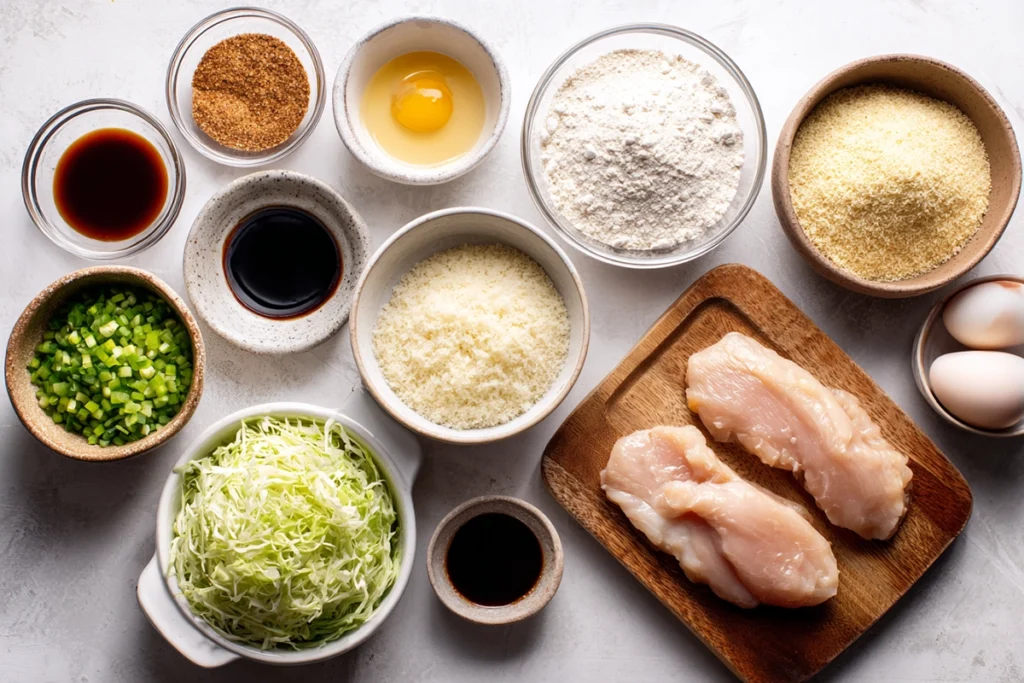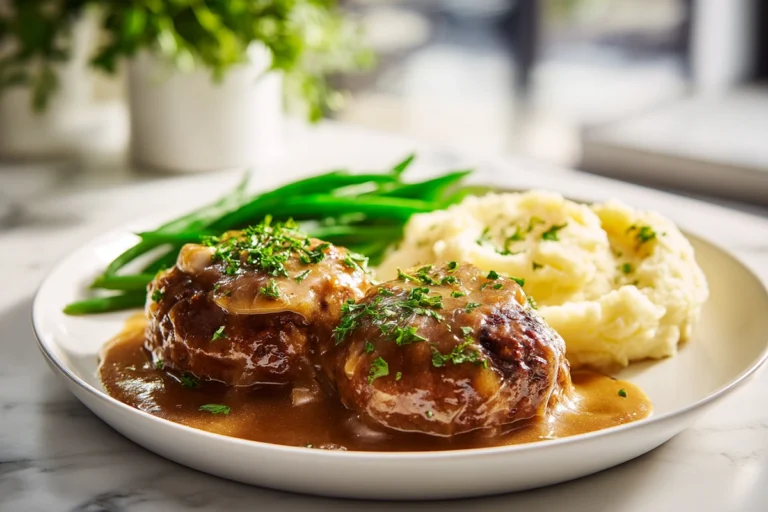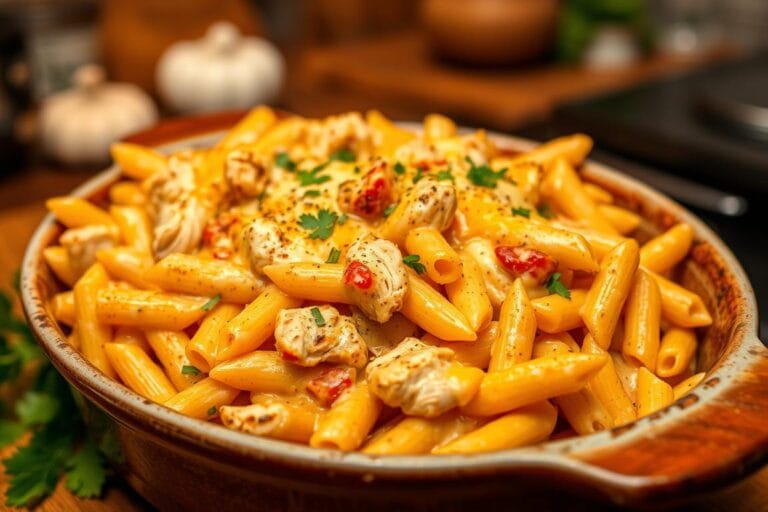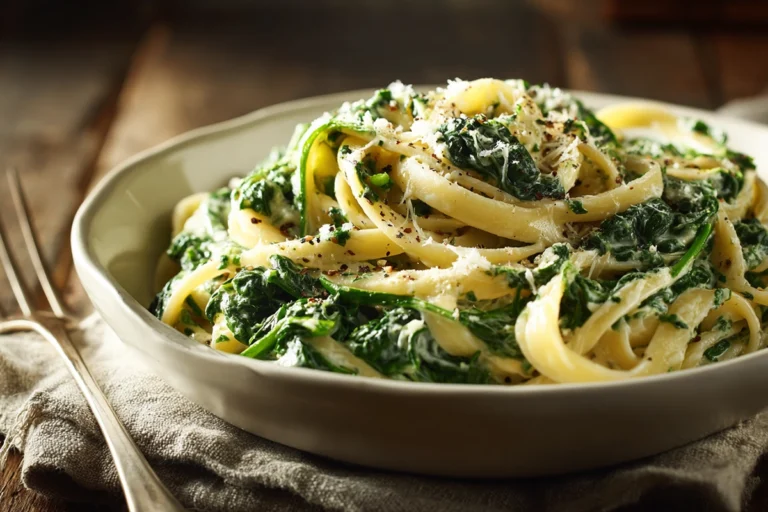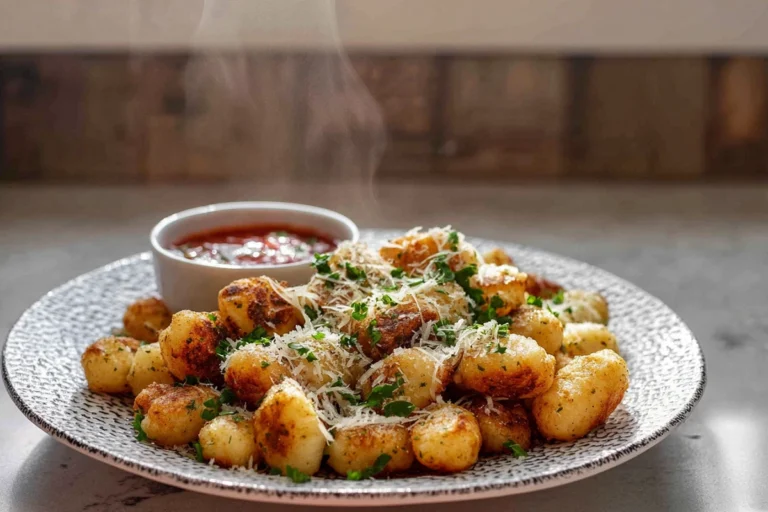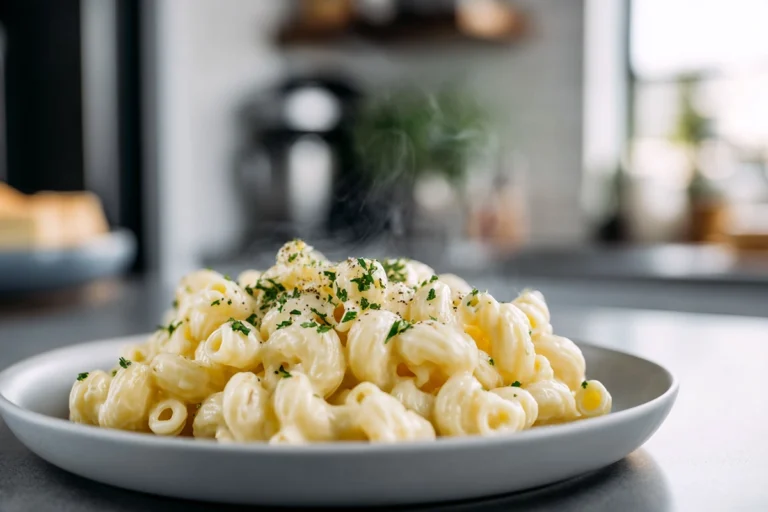Japanese Katsu Bowls – Crispy, Flavorful Comfort in Every Bite
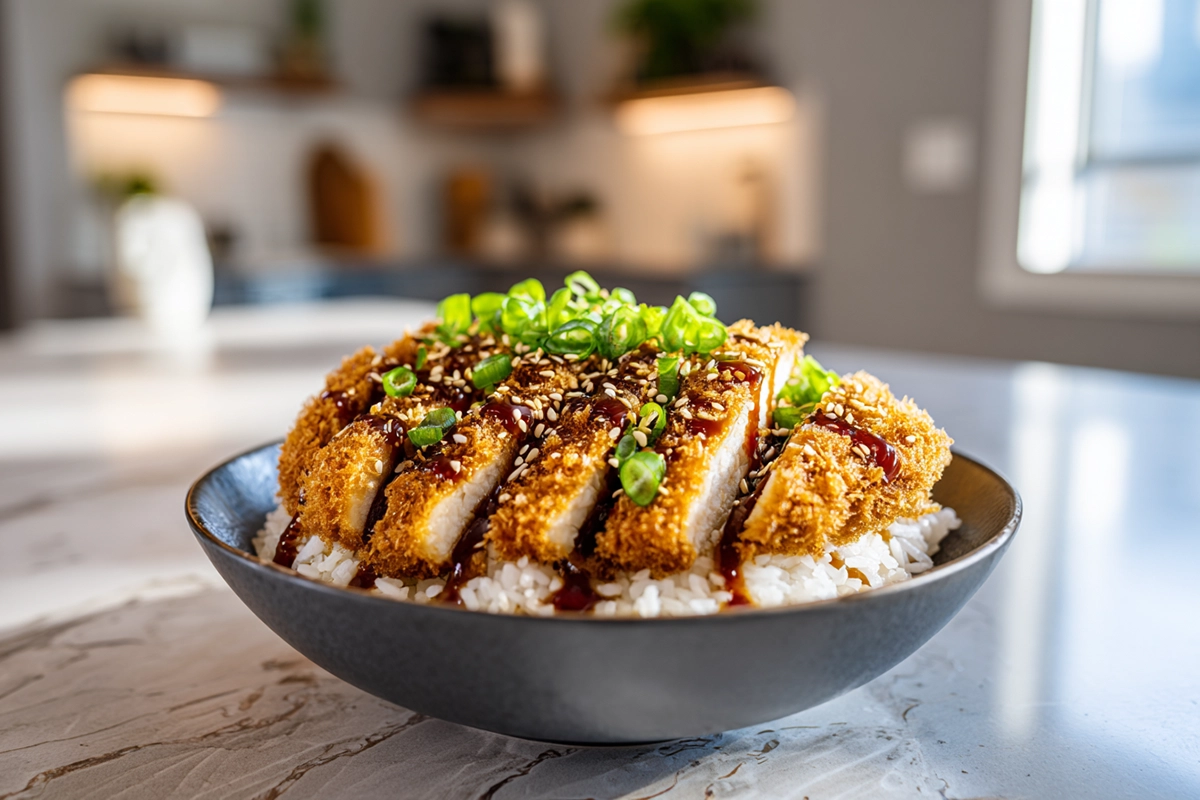
There’s something deeply satisfying about a crispy cutlet resting on a bed of steaming rice, drizzled with a sweet and savory sauce that hits all the right notes. If you’ve ever needed a meal that feels both cozy and exciting, Japanese Katsu Bowls might just become your new obsession. I remember the first time I tried katsu in a tiny Tokyo diner—each bite was crunchy, warm, and perfectly balanced. Now, I recreate that same magic at home whenever I crave comfort food that still feels fresh and modern.
This dish combines simple pantry staples with Japanese technique, creating a meal that’s both approachable and elegant. Whether you’re frying chicken or tofu, the essence of katsu lies in that irresistible golden crust and the contrast between crispy and tender.
What Is a Japanese Katsu Bowl?
At its core, a Japanese Katsu Bowl is a fusion of crispy breaded cutlet and soft rice—essentially comfort food with a delicate balance. The word katsu comes from katsuretsu, meaning cutlet, and it’s often made with chicken (chicken katsu).
While traditional katsudon includes an egg cooked with dashi broth over the cutlet, a katsu bowl usually skips that step, keeping the cutlet crispy until the last bite. You might even see modern versions that use spicy mayo, sesame drizzle, or pickled vegetables for added flair.
It’s not hard to see why these bowls are trending. They’re hearty yet clean, offering layers of texture and flavor that appeal to both traditional Japanese cuisine fans and modern food lovers.
Print
Japanese Katsu Bowls
- Total Time: 35 minutes
- Yield: 2 servings 1x
Description
Crispy, juicy cutlets served over warm rice and drizzled with savory tonkatsu sauce, Japanese Katsu Bowls offer a comforting, restaurant-style meal you can easily make at home. Each bite combines the crunch of golden panko, the tenderness of meat, and the rich umami of sauce — all balanced with fresh cabbage and rice.
Ingredients
2 boneless chicken breasts (pounded to ½-inch thickness)
Salt and pepper, to taste
½ cup all-purpose flour
2 large eggs, beaten
1½ cups panko breadcrumbs
Vegetable or canola oil, for frying (about 1½ inches deep)
2 cups cooked short-grain rice
2 tablespoons ketchup
1 tablespoon Worcestershire sauce
1 tablespoon soy sauce
1 teaspoon brown sugar
½ teaspoon Dijon mustard
Shredded cabbage or lettuce, for garnish
Sliced green onions, for garnish
Toasted sesame seeds, for garnish
Pickled ginger or cucumber slices (optional)
Instructions
-
Season the meat with salt and pepper, then dredge in flour, dip into beaten eggs, and coat with panko breadcrumbs.
-
Heat oil in a large pan to 350°F. Fry each cutlet for about 3–4 minutes per side until golden and cooked through. Drain on a wire rack.
-
In a small saucepan, whisk ketchup, Worcestershire sauce, soy sauce, sugar, and mustard over low heat until slightly thickened. Remove from heat.
-
Slice fried cutlets into strips.
-
To assemble, place warm rice in bowls, top with sliced cutlet, drizzle with tonkatsu sauce, and garnish with cabbage, green onions, sesame seeds, and pickles.
Notes
For extra crispiness, avoid overcrowding the pan when frying.
You can make the sauce in advance and refrigerate for up to a week.
Reheat leftover cutlets in an air fryer to restore crunch.
Substitute chicken with tofu, fish, or cauliflower for different dietary preferences.
- Prep Time: 15 minutes
- Cook Time: 20 minutes
- Category: Main Course
- Method: Frying
- Cuisine: Japanese
Nutrition
- Serving Size: 1 bowl
- Calories: 680
- Sugar: 8 g
- Sodium: 940 mg
- Fat: 28 g
- Saturated Fat: 6 g
- Unsaturated Fat: 20 g
- Trans Fat: 0 g
- Carbohydrates: 70 g
- Fiber: 3 g
- Protein: 34 g
- Cholesterol: 135 mg
Ingredients: What You Need (and Why)
To make a restaurant-quality Japanese Katsu Bowl, you don’t need exotic ingredients—just the right technique and a few smart choices.
Protein Options
- 2 boneless chicken breasts (pounded to ½-inch thickness)
- Salt and pepper, to taste
Breading
- ½ cup all-purpose flour
- 2 large eggs, beaten
- 1½ cups panko breadcrumbs (Japanese-style for maximum crunch)
Frying
- Vegetable or canola oil, enough for shallow frying (about 1½ inches deep)
Rice Base
- 2 cups cooked short-grain rice (or sushi rice for authentic texture)
Tonkatsu Sauce (Homemade Option)
- 2 tablespoons ketchup
- 1 tablespoon Worcestershire sauce
- 1 tablespoon soy sauce
- 1 teaspoon brown sugar
- ½ teaspoon Dijon mustard
Garnish
- Shredded cabbage or lettuce
- Sliced green onions
- Toasted sesame seeds
- Pickled ginger or cucumbers (optional)
Each ingredient serves a purpose. The panko provides a light, crispy coating, while the sauce ties everything together with a tangy-sweet punch. The shredded cabbage adds freshness, balancing the richness of the fried cutlet.
Step-by-Step Preparation & Cooking Instructions
Prepare the Cutlet
Start by seasoning your meat with salt and pepper. Lightly coat it in flour, dip it into the beaten eggs, then press it into the panko breadcrumbs. This triple-layer breading ensures your cutlet stays crunchy and golden.
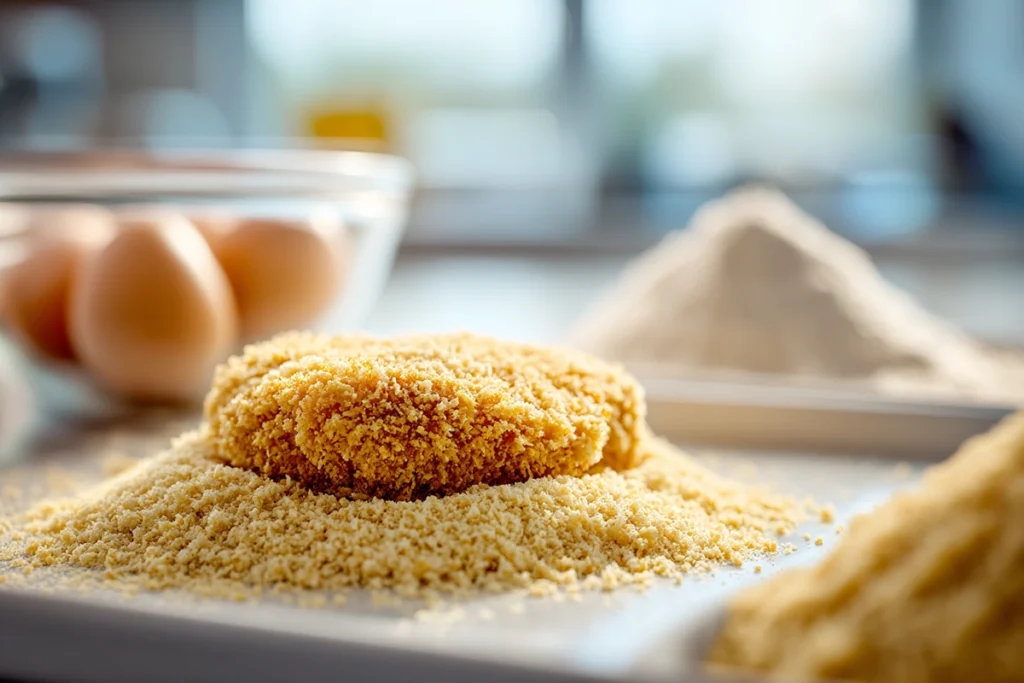
Fry to Perfection
Heat your oil to about 350°F. Once it shimmers, gently lay the cutlet in and let it fry undisturbed for about 3–4 minutes per side, depending on thickness. You’re looking for a deep golden-brown crust and an internal temperature of 165°F for chicken. Remove and drain on a wire rack (not paper towels—this prevents sogginess).
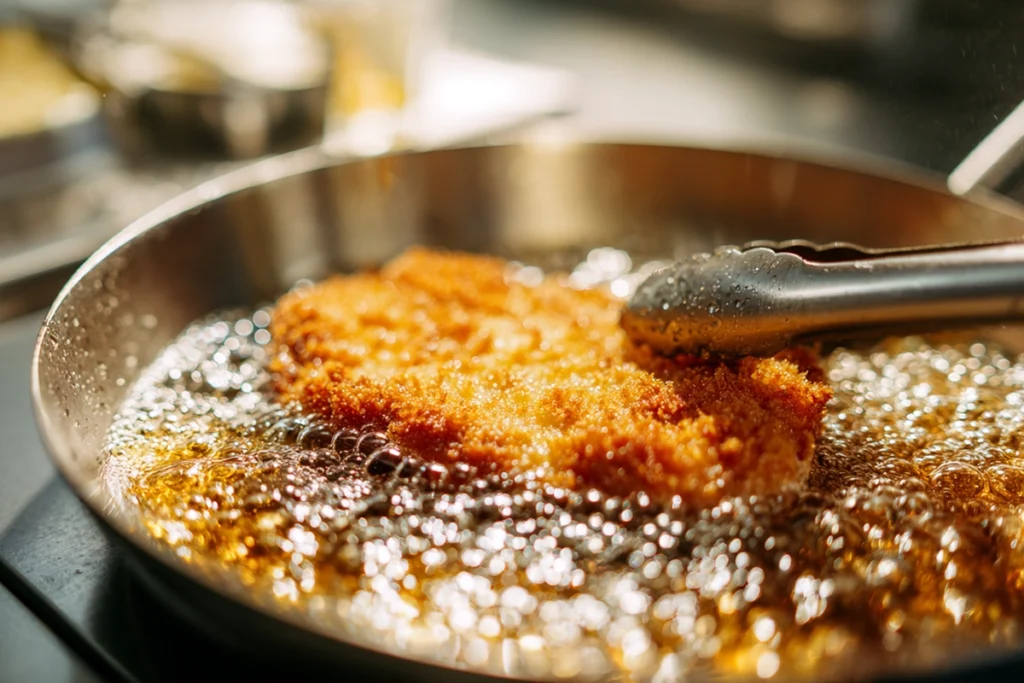
Make the Sauce
In a small saucepan, combine ketchup, soy sauce, Worcestershire, sugar, and mustard. Warm it just until it thickens slightly, then remove from the heat. It should taste tangy, a little sweet, and rich with umami flavor.
Assemble the Bowl
Spoon warm rice into a deep bowl. Slice your cutlet into strips and lay them across the rice. Drizzle the tonkatsu sauce over the top and finish with shredded cabbage, green onions, and sesame seeds.
If you want a little extra richness, add a dollop of Japanese mayo or a fried egg on top.
Dietary Variations & Substitutions
One of the best things about Japanese Katsu Bowls is how easy they are to adapt for different dietary preferences without losing that classic taste.
Vegan or Vegetarian
Replace the meat with firm tofu or cauliflower steaks. Press tofu well to remove moisture before breading it. Use a plant-based egg substitute and vegan Worcestershire sauce to keep the flavor profile authentic.
Gluten-Free
Swap flour and panko with gluten-free alternatives. Rice flour works beautifully for dredging, and gluten-free panko is widely available in most grocery stores. Use tamari instead of soy sauce for the sauce.
Low-Calorie or Lighter Version
Skip frying altogether and bake or air-fry your cutlet at 400°F for about 15–20 minutes. You’ll still get a crisp crust with far less oil. Use lean proteins like chicken breast or turkey, and reduce the sugar slightly.
Halal
Opt for chicken, turkey, or even fish cutlets. Make sure your sauce ingredients are certified halal and avoid any alcohol-based Worcestershire sauce.
These variations prove you can enjoy the comfort of katsu without compromising your dietary needs.
Tips, Variations & Serving Ideas
If you love experimenting, Japanese Katsu Bowls are a great canvas for creativity. Try a spicy twist with a drizzle of sriracha mayo or replace the tonkatsu sauce with teriyaki glaze for something sweeter.
You can also turn it into a fusion bowl—think kimchi and sesame drizzle for a Korean-inspired kick, or avocado and cucumber slices for a California-style touch.
When serving, pair your katsu bowl with a simple miso soup, a small salad, or pickled vegetables to balance the richness.
For meal prep, store the rice and katsu separately. Reheat the cutlet in an air fryer or oven at 375°F for about 5–6 minutes to revive that crispiness. Avoid microwaving—it’ll make the breading soft.
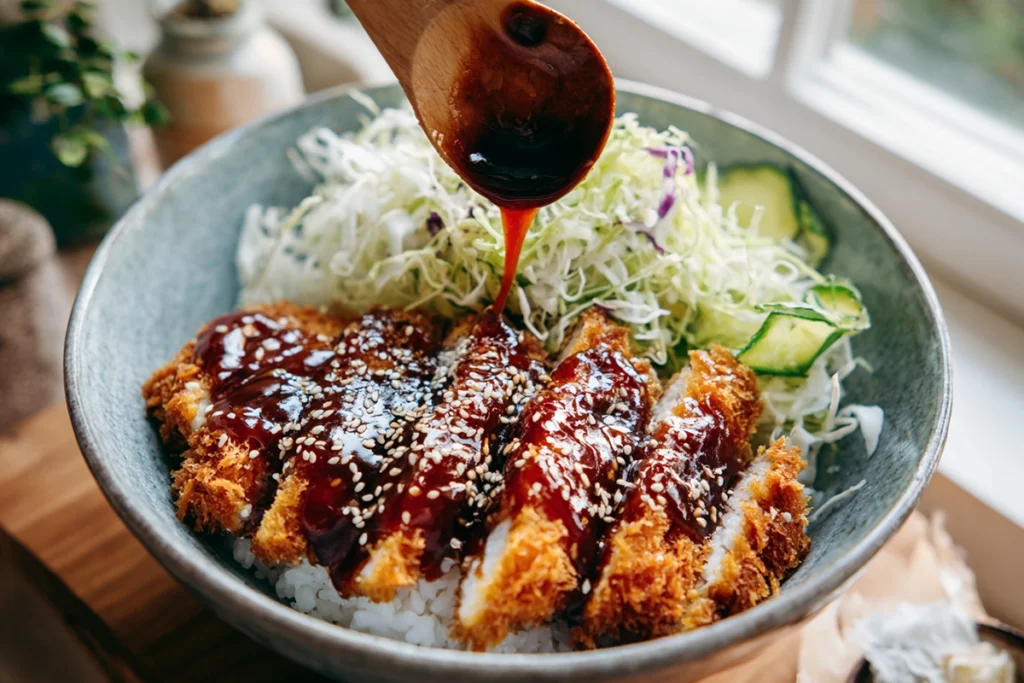
Storage, Reheating & Make-Ahead Tips
Leftovers are never a problem with Japanese Katsu Bowls. Store cutlets in an airtight container lined with paper towels for up to 3 days. Keep the rice in a separate container to prevent sogginess.
To reheat, use the oven or air fryer rather than the microwave. Bake at 375°F for 8–10 minutes or air fry at 350°F for 5–6 minutes. The sauce can be refrigerated in a small jar for up to a week.
If you’re planning, fry the cutlets and freeze them individually. When you’re ready to serve, simply heat them directly from frozen in an oven or air fryer.
Every bite of a Japanese Katsu Bowl tells a story of balance—crispy, tender, tangy, and comforting all at once. Whether you’re cooking for yourself or serving a family meal, this dish proves that simplicity doesn’t mean boring. With just a few steps and some thoughtful variations, you can bring authentic Japanese comfort food straight to your table—no passport required.
FAQ
What is the difference between katsu and katsudon?
Katsu refers to the breaded, fried cutlet itself, while katsudon is a rice bowl that includes katsu simmered with egg and sauce. Japanese Katsu Bowls keep the cutlet crispy and separate for extra crunch.
Can I use chicken instead for katsu bowls?
Absolutely! Chicken katsu is one of the most popular versions. Just use boneless chicken breasts or thighs, pound them evenly, and fry until golden and crisp.
Can I bake katsu instead of frying it?
Yes, you can! For a lighter take, bake at 400°F for about 20 minutes or air-fry at 375°F until crispy. You’ll still get that signature crunch with less oil.
What sauce goes best with Japanese Katsu Bowls?
Traditional tonkatsu sauce is a sweet and tangy blend of ketchup, soy sauce, and Worcestershire. You can also try spicy mayo, teriyaki glaze, or miso-based sauce for a twist.
How do I keep the katsu crispy when reheating?
Reheat in an oven or air fryer—never the microwave. A quick 5–6 minutes at 375°F brings back the crispiness without drying out the meat.
What Are Our Readers Saying?
There are no reviews yet. Be the first one to write one.

